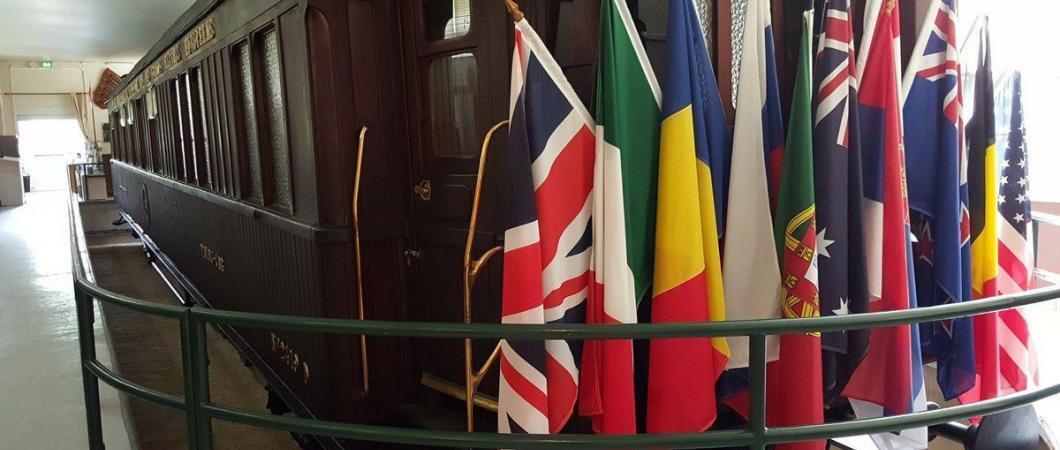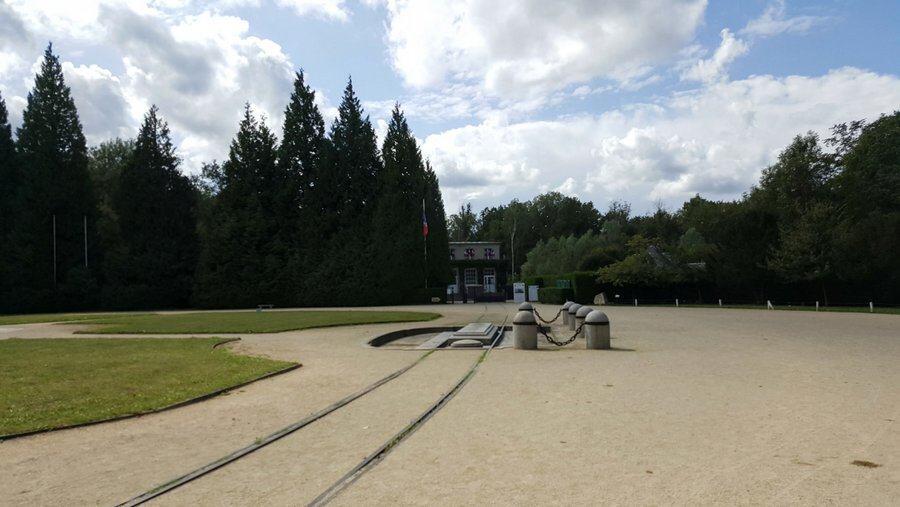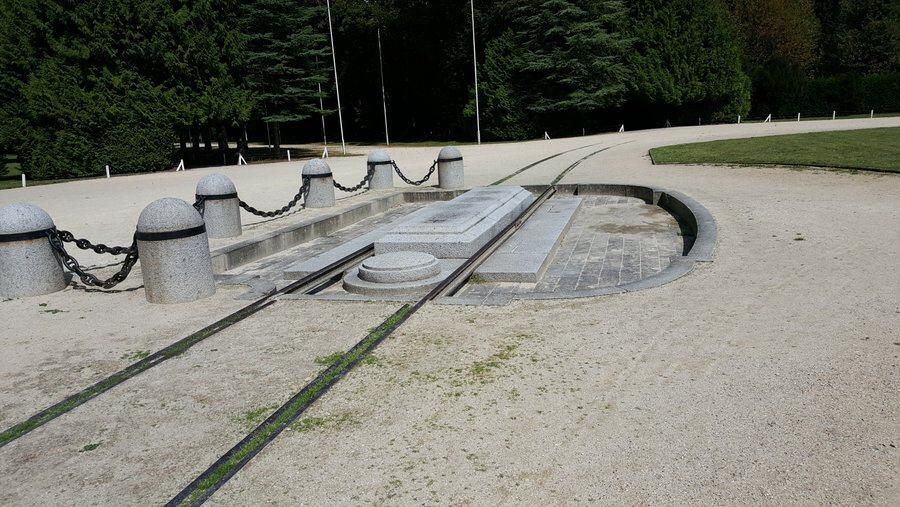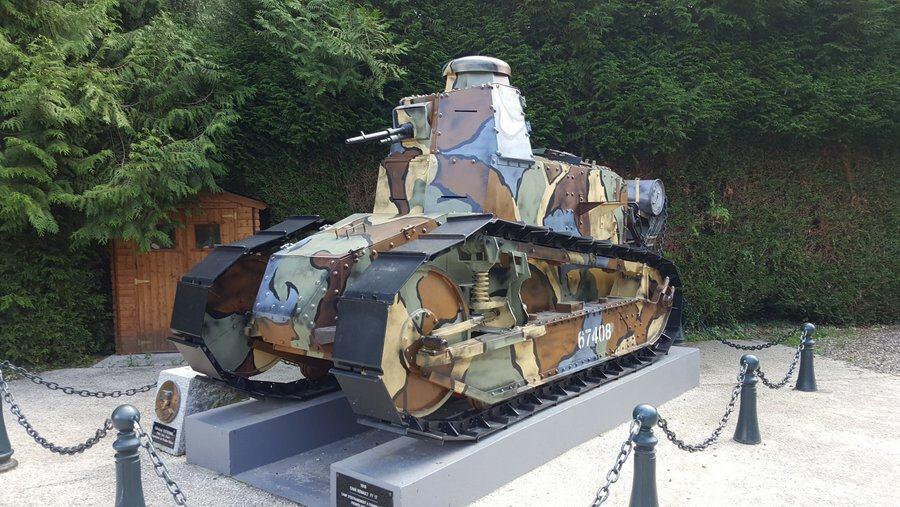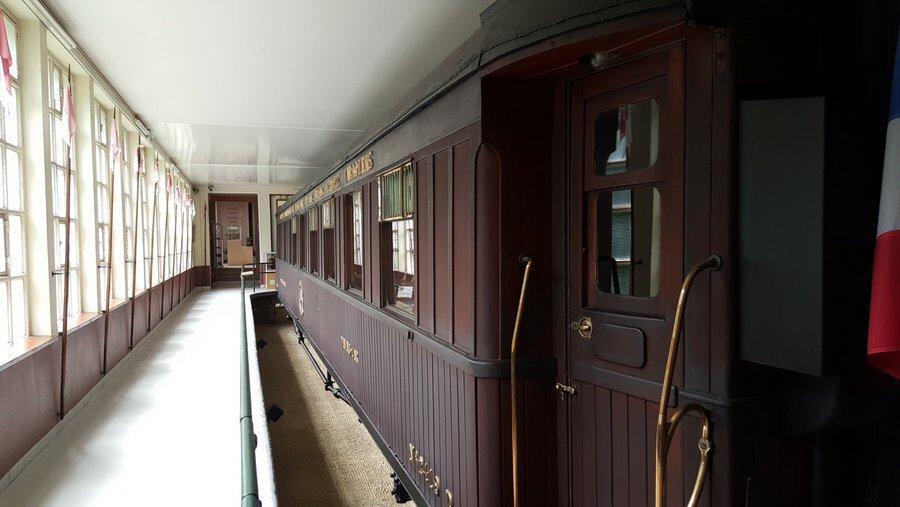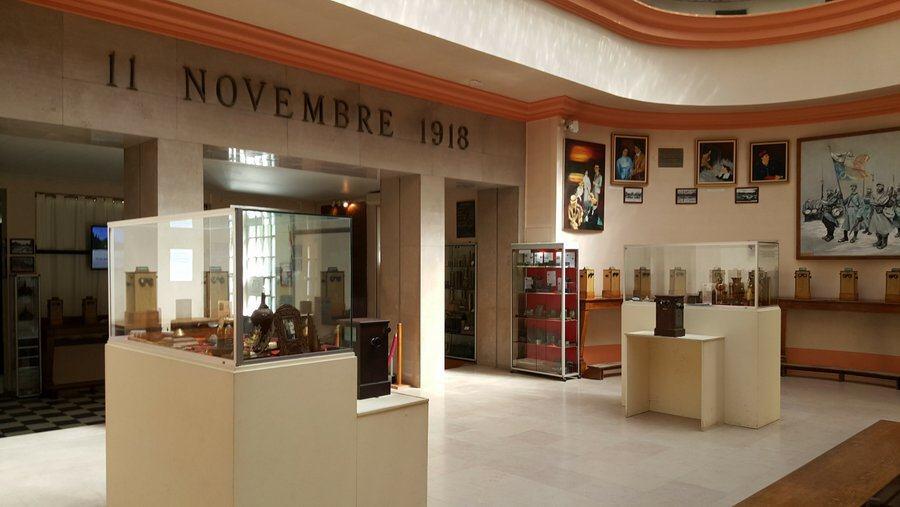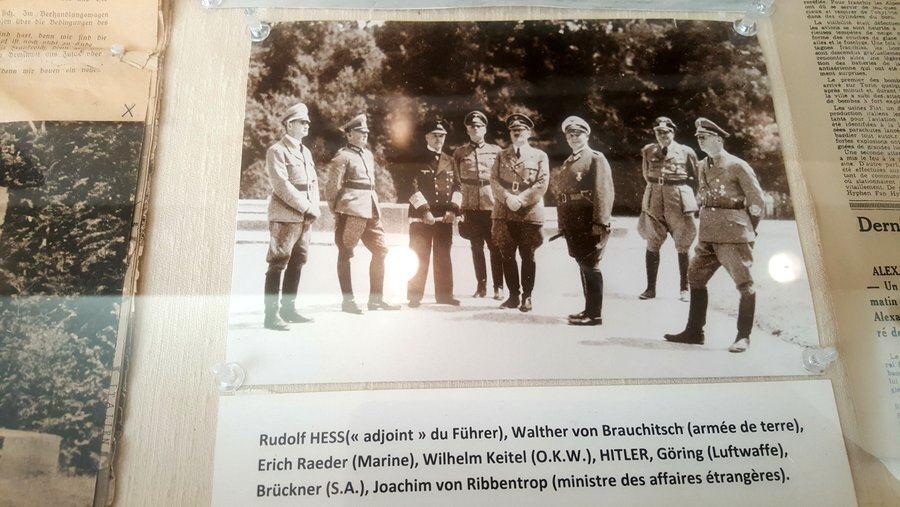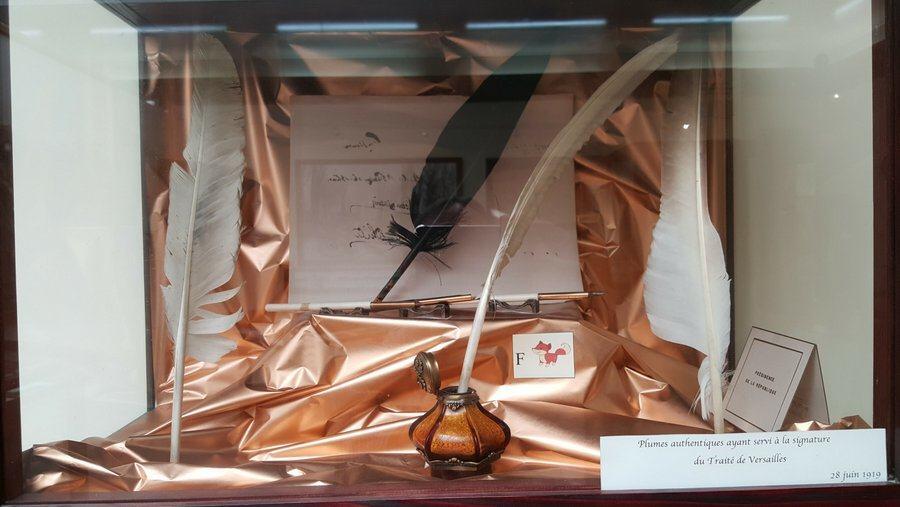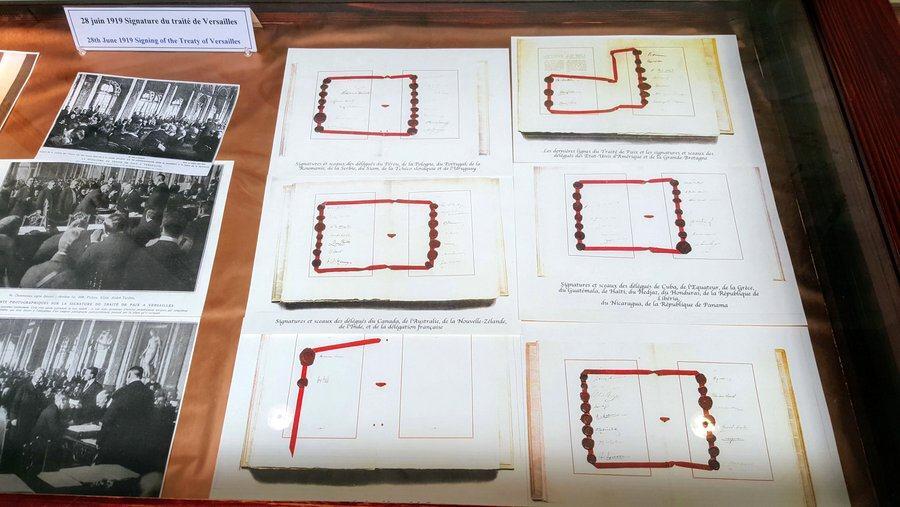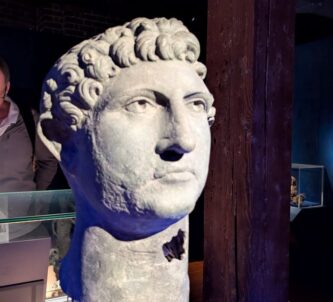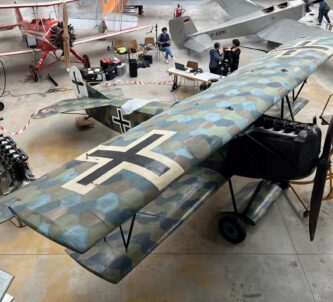This year is the 100th anniversary of the end of the First World War, and that moment finally came with the signing of the Armistice in a railway carriage in the middle of a wood 80 kilometres north east of Paris on 11th November 1918.
Yesterday, after three months of closure the museum on this highly significant historic site, which contains a replica of the original railway carriage plus many artifacts, documentation and photographs explaining the events that took place there, reopened with a new 1.3m Euro, 2-storey, 500m² extension to its original 1927 building.
What events did take place there?
Well that’s what makes it so interesting and poignant, because more than one highly-charged keystone moment in 20th century history happened on this isolated spot in the Forest of Compiègne.
World War I – 1918
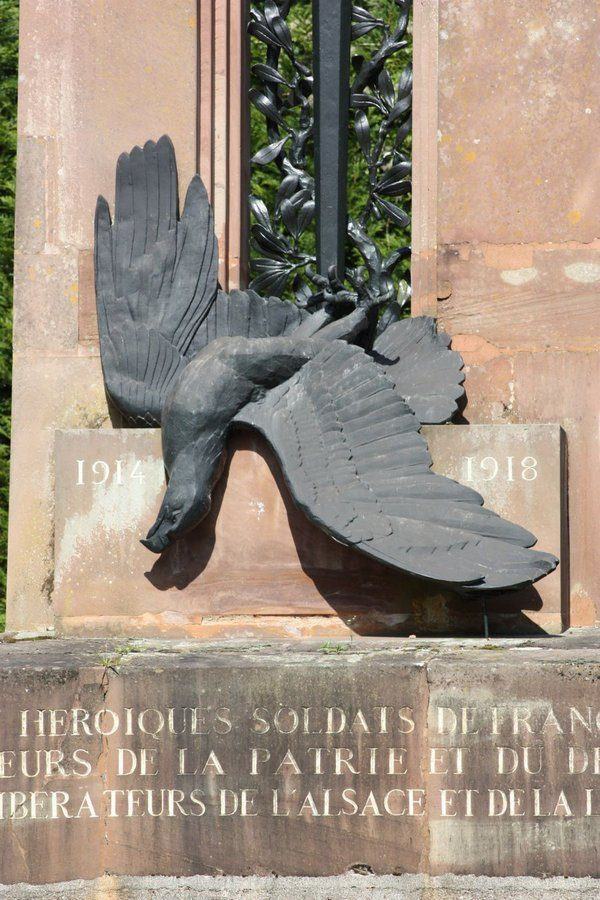
As the defeat of Germany drew near in the closing stages of WW1, the Allied Commander-in-Chief, Marshal Foch, needed to meet, negotiate and sign an armistice (a truce) with the Germans in a secret location. What better than to use his own private train and to meet in the dense woods of Compiègne on a spur of double track used for artillery trains, hidden away from prying eyes?
The German delegation were escorted in cars from the frontline to the mainline station at Tergnier where they boarded their train which took them to the location where Marshal Foch and the Allied delegation were waiting in his train. The negotiations took three days and the Armistice, which would come into effect at 11.00am Paris time on 11th Nov, was finally agreed and signed at 5.00am that morning.
Afterwards, Foch returned his train with the ‘Armistice Carriage’ (#2419) to Compagnie des Wagon-Lits where it went back to service as a restaurant car, and the site was cleared and marked with a statue of Foch, a monument depicting a German Eagle impaled by a sword and a block of granite with the words “Here on the eleventh of November 1918 succumbed the criminal pride of the German empire, vanquished by the free peoples which it tried to enslave”…
World War II – 1940
… you can imagine what Hitler thought of that when he stood in triumph in the clearing after winning the Battle of France in June 1940!
He had already decided to humiliate the French by having the ‘Armistice Carriage’ brought back to the site and forcing them to sign the ‘Second Armistice of Compiègne’ in the same spot.
Afterwards the Germans shipped the carriage back to Germany as a war prize to be put on display, and set about smashing up the site, especially the hated monument and inscription.
Of course, things didn’t go Germany’s way in WW2, and as American forces drew nearer, perhaps fearing a third trip to Compiègne for the now-famous carriage, SS troops are reported to have destroyed it in March 1945.
So, what’s there now?
Well, naturally, after the war the French restored the “Glade of the Armistice”, rebuilding the impaled eagle monument, re-marking the spot where the carriage had stood, creating another Foch statue… but stopping short, perhaps wisely, of re-writing any inflammatory inscriptions on blocks of granite! (Although they did use German POWs to clear the site!)
They also found a sister railcar to the ‘Armistice Carriage’; #2439 which was built in the same batch and had also been there in Nov 1918. They renumbered it as #2419D and put it in a small building with other memorabilia from the events on site.
The whole site, including the Armistice Museum , is now run by L’Association du Mémorial de la Clairière de l’Armistice. In addition to the ‘Armistice Carriage’, the museum has two rooms focusing on the events in 1918 and 1940.
The new extension will provide an education facility for visitors, with an immersive 3d experience upstairs, which helps explain how we went from peace to war again in 2 decades, and a space for schools & groups to work, downstairs.
The Association hopes the new facility will double the number of visitors to the memorial site, which currently draws 50,000 visitors a year.
Declaration: I visited last September and paid for my entrance to the museum.
Factbox
Website:
Le Mémorial de l’Armistice
Getting there:
Le Mémorial de l’Armistice
Route de Soissons
60200 Compiègne.
It’s slightly inaccessible (the reason Foch chose it). You can get there by train to Compiègne (SNCF Hauts-de-France) then taxi, but it’s easiest by car, and it’s not too far out of your way if you happen to be driving around Paris on your way to/from Belgium, Lille, or the Channel ports. Turn off the Autoroute du Nord A1 at junction 10 (Arsy). Head for Compiègne on the N31 and keep going. It’s quickest to skirt around Compiègne on the N1031, rejoining the N31 just before the signposted turning to the Armistice Memorial which is on the D546.
Museum Price:
Children (7-18yrs) : € 3.00
Adults: € 5.00
Groups / per person (30 people): € 3.00
Opening Hours:
Apr – Sep: Daily 10.00am – 6.00pm
Oct – Mar: Daily except Tue, 10.00am – 5.30pm

